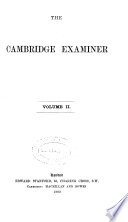 | Education, Higher - 1882 - 498 pages
...will be bisected by a perpendicular drawn to it from the middle point of the base. 6. Divide a given straight line into two parts so that the rectangle contained by the whole and one of the parts may equal the square on the other. 7. Divide a given straight line into two parts... | |
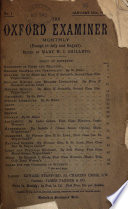 | Mary W I. Shilleto - 1882 - 418 pages
...sides is a right angle. Find a square which shall be equal to three given squares. 2. Divide a given straight line into two parts, so that the rectangle contained by the whole and one of the parts shall be equal to the square on the other part. Produce a given straight line... | |
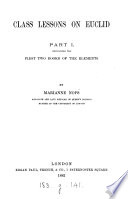 | Marianne Nops - 1882 - 278 pages
...required. The proof is obvious from the analysis. SUMMARY OF PROPOSITION XI., PROBLEM 1. To divide a given straight line into two parts, so that the rectangle contained by the whole and one of the parts shall be equal to the square on the other part. Cons. — On AB describe the square... | |
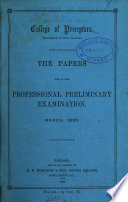 | College of preceptors - 1882 - 528 pages
...and meeting the sides (produced if necessary). 5. If a straight line be divided into any two parts, the rectangle contained by the whole line and one of the parts shall be equal to the rectangle contained by the two parts together with the square on the aforesaid... | |
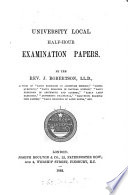 | John Robertson (LL.D., of Upton Park sch.) - Examinations - 1882 - 152 pages
...triangle are together less than two right angles. 5. If a straight line be divided into any two parts, the rectangle contained by the whole line and one of the parts is equal to the rectangle contained by the two parts, together with the square of the aforesaid part.... | |
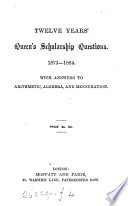 | Education Ministry of - 1882 - 300 pages
...triangle. 4. To describe a square that shall be equal to a given rectilineal figure. To divide a given straight line into two parts so that the rectangle contained by the two parts shall be equal to the square on one-fourth of the line given. 6. To draw a straight line... | |
 | University of Glasgow - 1883 - 438 pages
...adjacent to this angle and the side opposite are given. When is the problem impossible. 3. Show how to divide a straight line into two parts so that the rectangle contained by the whole and one of the parts may be equal to the square on the other part. If the length of the larger segment... | |
 | Civil service commission - 1883 - 62 pages
...is proved in Eue. II. 4, and is stated as a corollary to that proposition. g. — (1) Divide a given straight line into two parts, so that the rectangle contained by the whole and one of the parts may be equal to the square on the other part. (2) If А В be so divided in C,... | |
 | 1886 - 568 pages
...lines which are parallel to the same straight line are parallel to each other. 5. To divide a given straight line into two parts, so that the rectangle contained by the whole and one of the parts shall be equal to the square on the other part. NATURAL PHILOSOPHY. FIRST AND... | |
 | Joseph Hughes - Education - 1883 - 568 pages
...parts, together with twice the rectangle contained by the parts. Euclid II., 4. 3. To divide a given straight line into two parts, so that the rectangle contained by the whole, and one of the parts, shall be equal to the square on the other part. Euclid П., u. I. Prove that... | |
| |